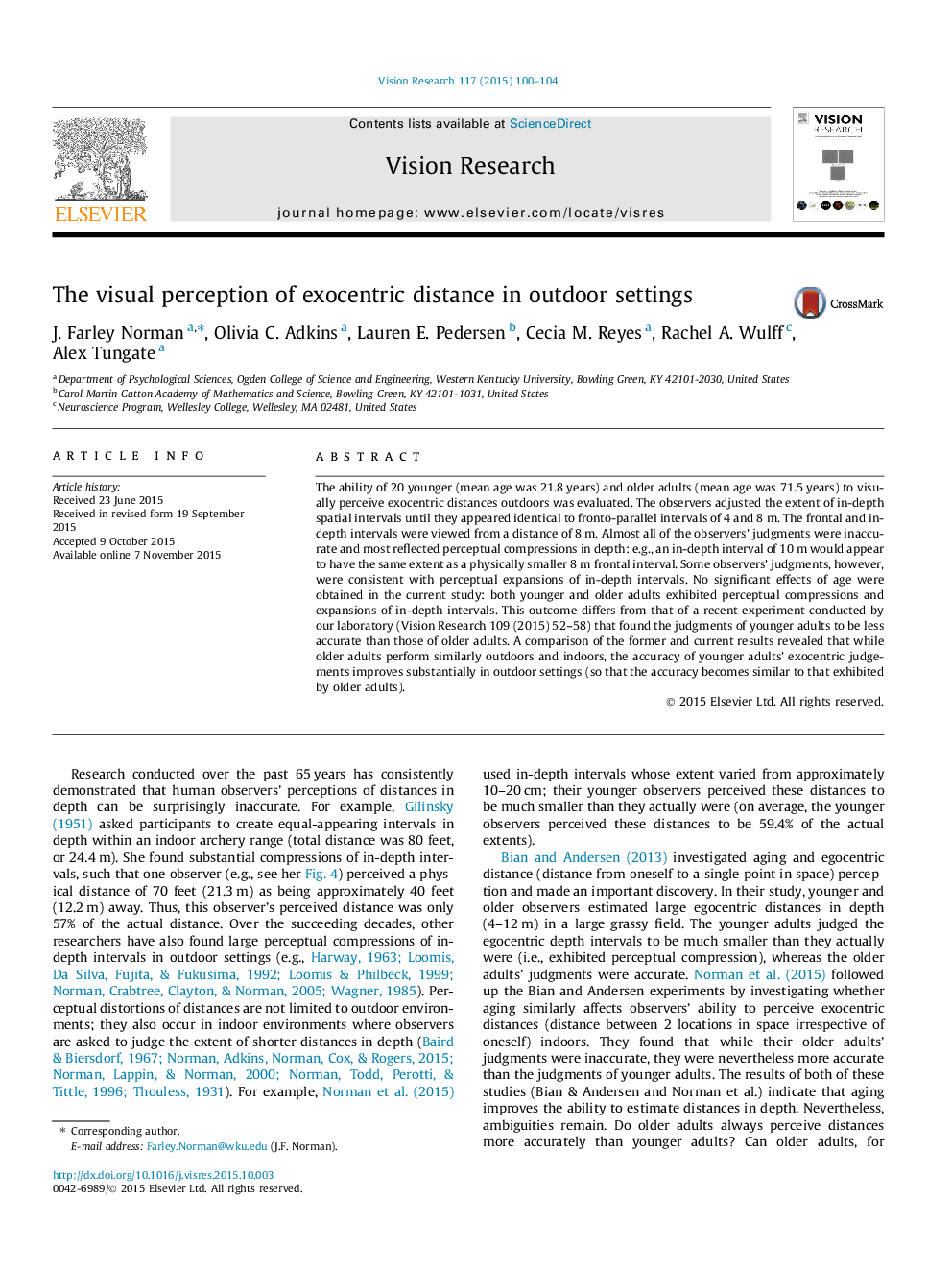| Article ID | Journal | Published Year | Pages | File Type |
|---|---|---|---|---|
| 6203085 | Vision Research | 2015 | 5 Pages |
â¢Observers' visual perceptions of exocentric distance outdoors are inaccurate.â¢Outdoor exocentric distance judgments are unaffected by age.â¢Younger adults' outdoor distance judgments differ from those made indoors.â¢Older adults' distance judgments are invariant across indoor and outdoor settings.
The ability of 20 younger (mean age was 21.8Â years) and older adults (mean age was 71.5Â years) to visually perceive exocentric distances outdoors was evaluated. The observers adjusted the extent of in-depth spatial intervals until they appeared identical to fronto-parallel intervals of 4 and 8Â m. The frontal and in-depth intervals were viewed from a distance of 8Â m. Almost all of the observers' judgments were inaccurate and most reflected perceptual compressions in depth: e.g., an in-depth interval of 10Â m would appear to have the same extent as a physically smaller 8Â m frontal interval. Some observers' judgments, however, were consistent with perceptual expansions of in-depth intervals. No significant effects of age were obtained in the current study: both younger and older adults exhibited perceptual compressions and expansions of in-depth intervals. This outcome differs from that of a recent experiment conducted by our laboratory (Vision Research 109 (2015) 52-58) that found the judgments of younger adults to be less accurate than those of older adults. A comparison of the former and current results revealed that while older adults perform similarly outdoors and indoors, the accuracy of younger adults' exocentric judgements improves substantially in outdoor settings (so that the accuracy becomes similar to that exhibited by older adults).
